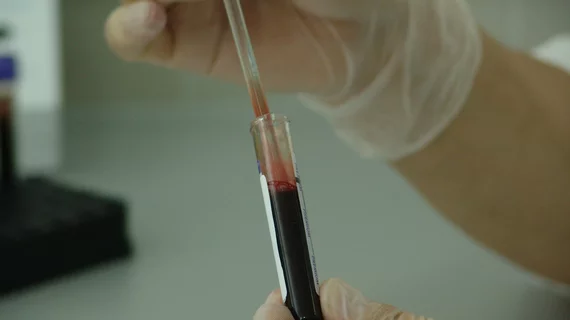Both initial and serial increases in high-sensitivity C-reactive protein (hsCRP) concentrations are independently predictive of cardiac events following acute coronary syndrome (ACS), according to a new study in JAMA Cardiology.
Baseline hsCRP levels had been previously tied to the risk of major adverse cardiac events (MACE), noted lead author Preethi Mani, MD, of the Cleveland Clinic, and colleagues, but this is the first analysis to indicate subsequent measurements of the biomarker may provide additional prognostic information.
“The present study supports previous evidence that hsCRP levels measured at the time of ACS are associated with future events and provides new data suggesting that an increase in hsCRP levels after ACS is associated with risk for MACE, cardiovascular death, and all-cause death,” Mani et al. wrote. “Each (standard deviation) increment in longitudinal hsCRP concentration was associated with a 15% increased risk of MACE, 25% increased risk of all-cause death, and 26% increased risk of cardiovascular death.”
MACE comprised a composite of cardiovascular death, myocardial infarction, nonfatal stroke and unstable angina requiring hospitalization.
The analysis included 4,257 patients from the VISTA-16 trial with both baseline and follow-up hsCRP measurements at one, two, four, eight and 16 weeks after study enrollment. Patients were 60.3 years old on average, 73.8 percent were men, 77.1 percent had hypertension and half had hypercholesterolemia.
Individuals were randomized to either varespladib or placebo—both with a background of atorvastatin therapy—and tracked for the outcomes of MACE, cardiovascular death and all-cause mortality throughout the 16-week treatment period.
While higher hsCRP levels during serial measurements were associated with the aforementioned increases in those outcomes, the baseline hsCRP levels after ACS were linked even more strongly to adverse events. Each standard deviation increase in baseline hsCRP concentration was associated with a 61 percent increased risk of cardiovascular death, 58 percent increased risk of all-cause death and 36 percent increased risk of MACE.
“Although it remains unclear whether CRP level is a marker or a participant in the atherothrombotic process, identification of increasing CRP levels may help determine which patients may benefit from more intensive treatment,” the authors wrote.
“From a mechanistic perspective, CRP has been shown to have a reciprocal relationship with both low-density lipoprotein cholesterol levels and high-density lipoprotein cholesterol levels. In addition, CRP-plaque interactions have been shown to promote a prothrombotic milieu by influencing many steps in the pathogenesis of atherosclerosis.”
Mani and colleagues said the short follow-up duration was a limitation of their analysis, as it would be informative to track whether early changes in hsCRP following an ACS are also predictive of long-term outcomes.
Nevertheless, medications can modify hsCRP levels, the authors pointed out. Evidence supports that antiplatelet therapies such as clopidogrel and prasugrel, as well as anti-inflammatory medications like canakinumab, can have this effect. In the CANTOS trial, researchers found patients with previous MI who attained hsCRP levels below 2 mg/L with canakinumab showed significant reductions in MACE, all-cause mortality and cardiovascular mortality—which is consistent with the results from Mani et al.
“Our findings suggest that, in addition to targeting cholesterol measurements to reduce residual risk in patients after ACS, modulating residual inflammation may be an important factor associated with decreasing morbidity and mortality after ACS,” Mani and co-authors wrote.

